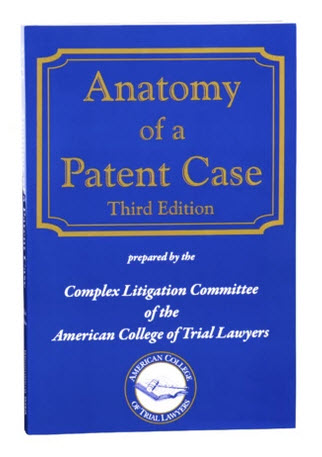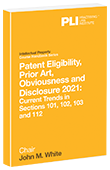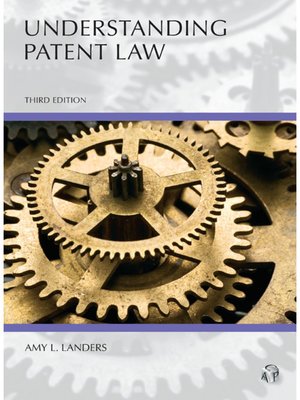Introduction
The USPTO defines a "patent" as:
A patent for an invention is the grant of a property right to the inventor, issued by the United States Patent and Trademark Office…What is granted is not the right to make, use, offer for sale, sell or import, but the right to exclude others from making, using, offering for sale, selling or importing the invention.
The subject matter of a patent must be:
- Useful,
- Novel, &
- Non-Obvious
For more on patentability, see the USPTO's Patent Basics.
Utility Patent
USPTO defintion: "[A]ny new and useful process, machine, article of manufacture, or composition of matter, or any new and useful improvement thereof."
- Maintenance fees required
- Term is generally 20 years from date of filing
- E.g., US 10,460,568 B2, specialized slot machine

Design Patent
USPTO defintion: "[A] new, original, and ornamental design for an article of manufacture."
- No maintenance fees required
- Term is generally 14 years from date of filing
- E.g., US D906,656 S, Reebok® shoe design

Plant Patent
USPTO defintion: "[A]ny distinct and new variety of plant."
- No maintenance fees required
- Term is generally 20 years from date of filing
- E.g., US PP20,911 P2, Echinacea purpurea or Green Queen

Primary Law
Historical Antecedents
Historical antecedents to the American patent system include:
- 1331 Letters of protection issued to John Kempe in England
- 1474 Patent Statute of Venice (established a "strong core" that subsequent patent systems built upon)
- 1623 Statute of Monopolies, 21 Jac. 1, c. 3 (Eng)
For more history, see John N. Adams' History of the patent system or browse the library catalog. For a timeline of changes to patent law since 1952, see Ladas & Parry's Brief History of the Patent Law of the United States.
The Constitution
The Intellectual Property Clause of the Constitution states:
[Congress shall have Power . . . ] To promote the Progress of Science and useful Arts, by securing for limited Times to Authors and Inventors the exclusive Right to their respective Writings and Discoveries.
U.S. Const. art. 1, § 8, cl. 8. For more on the origins and scope of patents, see the Constitution Annotated.
Statutes
The first patent act was passed in 1790. There have been four important revisions or codifications since: 1793, 1836, 1870 and 1952.
- The Patent Act of 1952, 66 Stat. 792, 94 P.L. 131.
- Amending Patent Act: Leahy-Smith America Invents Act ( Public Law 112-29).
- Statutes at Large: 125 Stat. 284, 112 P.L. 29 (Popular names: AIA, Patent Reform).
- Patent Acts: Title 35 of the United States Code.
- United States Code (U.S.C.). (Official codification of the United States Statutes).
- United States Code Annotated (U.S.C.A.). (Thomson Reuters Westlaw). (Unofficial version of Title 35 of the United States Code).
- United States Code Service (U.S.C.S.). (Lexis Advance).
- United States Code (U.S.C.). (HeinOnline).
Regulations
Title 37 of the Code of Federal Regulations (CFR)
- eCFR: Electronic Code of Federal Regulations
- Government Publishing Office
- HeinOnline
- Lexis Advance
- Westlaw
Administrative Decisions
Cases
- Alice Corp. Pty. Ltd. v. CLS Bank International, 134 S. Ct. 2347 (2014).
- Association for Molecular Pathology v. Myriad Genetics, Inc., 569 U.S. 576 (2013).
- Bedford v. Hunt, 3 F. Cas. 37, (C.C.D. Mass. 1817).
- Bilski v. Kappos, 561 U.S. 593 (2010).
- Diamond v. Chakrabarty, 447 U.S. 303 (1980).
- Diamond v. Diehr, 450 U.S. 175 (1981).
- DSU Medical Corp. v. JMS Co., Ltd., 471 F.3d 1293 (Fed. Cir. 2006).
- Eli Lilly & Co. v. American Cyanamid Co., 82 F.3d 1568 (Fed. Cir. 1996).
- Festo Corp. v. Shoketsu Kinzoku Kogyo Kabushiki Co., Ltd., 535 U.S. 722 (2002).
- Gottschalk v. Benson, 409 U.S. 63 (1972).
- Graham v. John Deere Co., 383 U.S. 1 (1966).
- Hotchkiss v. Greenwood, 52 U.S. 248 (1851).
- Imazio Nursery, Inc. v. Dania Greenhouses, 69 F.3d 1560 (Fed. Cir. 1995).
- Kewanee Oil Co. v. Bicron, 416 U.S. 470 (1974).
- KSR Intern. Co. v. Teleflex, 550 U.S. 398 (2007).
- Markman v. Westview Instruments, Inc., (Markman I), 52 F. 3d 967 (Fed. Cir. 1995).
- Markman v. Westview Instruments, Inc., (Markman II), 517 U.S. 370 (1996).
- Mayo Collaborative Services v. Prometheus Laboratories, Inc., 566 U.S. 66 (2012).
- Microsoft Corp. v. AT&T Corp., 550 U.S. 437 (2007).
- Parker v. Flook, 437 U.S. 584 (1978).
- State Street Bank and Trust Co. v. Signature Financial Group, Inc., 149 F.3d 1368 (Fed. Cir. 1998).
- In re Tamoxifen Citrate Antitrust Litigation, 466 F.3d 197 (2d Cir. 2006).
For more, see Federal Patent Cases.
Secondary Sources
 Harmon on Patents: Black-Letter Law & Commentary by Publication Date: 2007
Harmon on Patents: Black-Letter Law & Commentary by Publication Date: 2007
Patents, Human Rights and Access to Science by
Call Number: K1519.B54 P57ISBN: 9781783475926Publication Date: 2015
Faber on Mechanics of Patent Claim Drafting by
Call Number: KF3125.C5F332ISBN: 9781402424267Publication Date: 2015Invention Analysis and Claiming by
Call Number: KF3131 .S58ISBN: 9781590318188Publication Date: 2007
 Anatomy of a Patent Case by Call Number: KF3155 .A96 2012ISBN: 9781617461804Publication Date: 2012-11-01Print is 2nd ed. Bloomberg is current ed.
Anatomy of a Patent Case by Call Number: KF3155 .A96 2012ISBN: 9781617461804Publication Date: 2012-11-01Print is 2nd ed. Bloomberg is current ed. Patent Eligibility, Prior Art, Obviousness and Disclosure 2021: Current Trends in Sections 101, 102, 103 and 112ISBN: 9781402438578Publication Date: 2021
Patent Eligibility, Prior Art, Obviousness and Disclosure 2021: Current Trends in Sections 101, 102, 103 and 112ISBN: 9781402438578Publication Date: 2021 Practitioners Guide to Trials Before the Patent Trial & Appeal Board by ISBN: 9781634255738Publication Date: 2016
Practitioners Guide to Trials Before the Patent Trial & Appeal Board by ISBN: 9781634255738Publication Date: 2016
- Secondary Sources: Intellectual PropertyUnder Topic use the Narrow Topic search bar to narrow to only patent sources.
- Legal Resource Index (LRI)A controlled-vocabulary index of legal literature with a focus that includes legal newspapers, bar journals, and other practice-oriented material. LRI coverage generally begins in 1980, with a later starting date for certain individual publications. Click the icon of the database you prefer to link to the Index.
- EBSCO Legal CollectionCollection of about 250 law journals, including a mix of law-school based journals, peer-reviewed journals, bar journals, and other genres of legal literature.
- EBSCO Academic Search CompleteA multi-disciplinary full-text database that indexes and abstracts over 10,000 publications, some law-related. Includes the full-text of over 5,400 periodicals, including more than 4,400 peer-reviewed journals.
- Index to Legal Periodicals and Books (ILP)This is the premier index of legal periodicals, books, and sympoisa, with a primary focus on English language resources. Many articles are available in full-text. Some articles may be available via HeinOnline.
- Derwent Innovations Index (DII)Derwent Innovations Index (DII) provides access to more than 14,800,000 patents with links to cited and citing patents, cited articles, and full-text patent data sources. Sections include Chemical, Electrical and Electronic, Engineering and Science and Technology.






 lessons and tutorials:
lessons and tutorials: